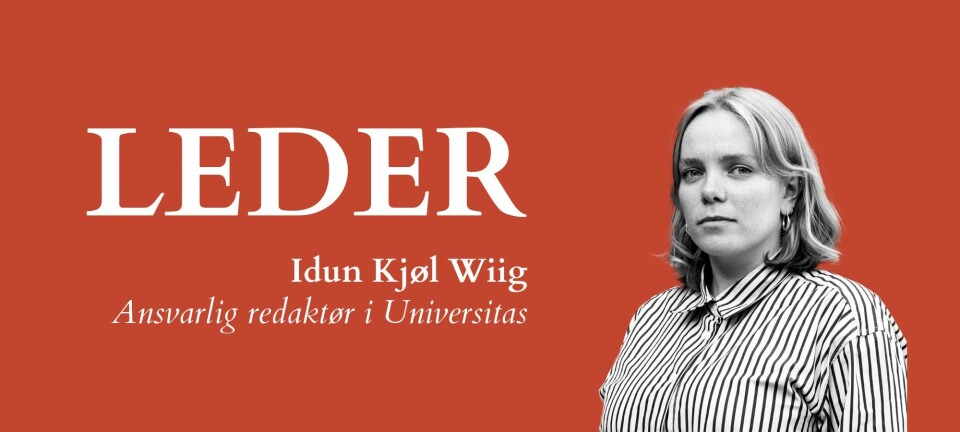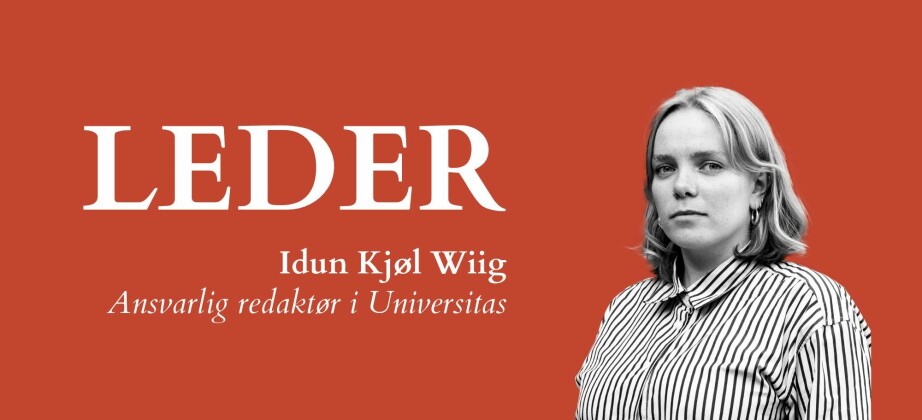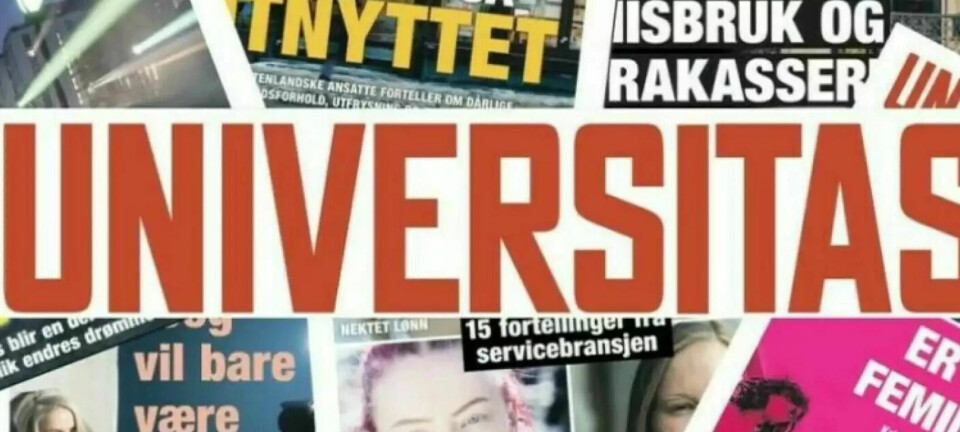
New Tuition Fees in Norway: A Guide for Non-EU Students
Yes, we have to pay now.
Are you an international student thinking about continuing your education in Norway? If you’re from outside the EU/EEA, you’ll have to think twice.
Gone with “Gratisprinsippet”
Following “gratisprinsippet,” or the free-principle, education at public universities across Norway has been free of charge for all students — until now. On October 6, 2022, the government announced that students from countries outside the EU/EEA who take their full degree at a Norwegian institution will be obliged to pay tuition fees. Students who are coming to Norway on an exchange program, who have already started their bachelor’s or master’s degree, or who meet other exemption criteria discussed further below, will not be affected by this drastic change. However, for the non-EU students who might want to embark on a new degree, the economic barrier of entry will be much higher.
Universitas’ Norwegian section has also written an article covering the implementation of tuition fees at UiO, which includes comments from figures in politics and education on the short- and long-term consequences of the whirlwind introduction of this policy.
An Uncertain Future
While it is all but inevitable now that the planned tuition fees will be put into effect, it is important to note that the legislation has not yet been finalized, and details are subject to change. The University of Tromsø estimates that the policy will be finalized by mid-April, which is also when the application deadline falls for local students wishing to apply to programs commencing in autumn 2023.
Though Kunnskapsdepartementet has given their own recommendations for how much different types of degrees should cost, the government has left it to the discretion of the individual universities to set the prices. As we enter admissions season, institutions across Norway have started releasing their tentative plans regarding tuition fees for the coming autumn semester.
According to the article from Khrono, a web-based newspaper focusing on news in higher education, four of the major universities in Norway, University of Oslo (UiO), University of Bergen (UiB), the Norwegian University of Science and Technology (NTNU), and University of Tromsø (UiT) have collectively agreed to use the recommendations set forth by the government as a starting point. However, in my personal correspondence with each of these universities, I have received different answers as to how much tuition fees will be, who they will apply to, and even how certain it is that the scheme will be set in place after all.
Below is a comparison of many of the major formerly-free universities in Norway, in regards to their approach to the hastily-introduced mandate, as well as the pricetags they are putting on their curricula.
Some universities have already provided more details on tuition fees...
University of Oslo
The University of Oslo has been one of the most forthcoming and proactive in releasing information about their plans for instituting tuition fees. I reached out to the administration before Christmas to inquire about the projected costs, and while they did not have a ready answer at that time, they followed up with me of their own accord when they had more facts available.
UiO now has a dedicated webpage for breaking down the costs of tuition fees. While they have not yet determined how much each individual program will cost, they have provided an estimated price range for bachelor’s, master’s, and professional programs. The lowest figure given is 130,000 NOK per year at the bachelor level, and the highest is 500,000 NOK for some professional programs. UiO anticipates releasing a more minute breakdown by the end of March.
OsloMet
Though tuition fees will apply to both Norwegian and English programs, OsloMet has only released a summary of projected tuition fees for the latter, presumably because students coming from abroad will unlikely be fluent enough in Norwegian to be eligible for the former.
A complete list of degrees taught in English, as well as their respective prices, can be found on OsloMet’s website. The lowest figure given is 185,400 NOK per year, which is on par with the master’s degrees offered by the University of Tromsø, as discussed in more detail further below.
The highest price is assigned to degrees in the field of design, which comes to a steep 373,550 NOK per year.
University of Stavanger
The University of Stavanger was also one of the first universities to announce their strategy concerning tuition fees for non-EU students. However, they are choosing – for this coming year at least – to forgo the recommendation of the government, and have instead set the fees significantly lower.
Instead of assigning a particular price to a particular degree, UiS has divided their programs into three broad categories, and determined a blanket fee for each. A more thorough breakdown of which programs are included in which category can be found on their website, but here is a general overview:
- Bachelor’s degrees will cost 80,000 NOK per year
- Master’s degrees in the humanities and social sciences will cost 125,000 NOK per year
- Master’s degrees in STEM and performing arts will cost 150,000 NOK per year
NMBU
NMBU, or the Norwegian University of Life Sciences, has determined fees for programs taught in English, but has not released a full breakdown of the costs for degrees taught in Norwegian. However, it is important to emphasize that non-EU students should be prepared to pay tuition fees, regardless of which language they study in.
Like UiS, the most affordable degrees at NMBU are priced at 80,000 NOK. However, the various programs are divided into price categories based more on the cost to run the program, rather than the level of education the program provides (i.e. bachelor’s as opposed to master’s). Similar again to UiS, some degrees are valued at 125,000 NOK, while others are valued at 150,000 NOK. The most expensive program is Landscape Architecture for Global Sustainability, which will cost 225,000 NOK. See NMBU’s website for more details.
University of Tromsø
UiT has also released information on tuition fees for the 2023-2024 academic year, for programs taught in English. A full breakdown can be found on their webpage for international admissions, but it’s also worth noting here how wide the spectrum is when it comes to the fees for particular programs, especially at UiT.
The lowest figure given is 48,200 NOK for a one-year program in Norwegian Language and Society. Another one-year course to become an Arctic Nature Guide is a close second, costing 55,200 NOK. The master’s degrees offered at UiT are comparable in price to those offered by UiO. Those falling under the humanities and social sciences will cost 185,400 NOK per year, while STEM programs will be 255,000 NOK per year. The two most expensive programs, the master in Landscape Architecture and the master in Fine Art, are set to 373,500 NOK per year.
...while other universities are still working it out
University of Bergen
The University of Bergen has not updated their webpage for international admissions since last year, so they have not yet released any details about the tuition fees they plan to charge non-EU students starting this autumn. At the time of writing, they have not responded to my inquiry asking for more specific information. However, on March 15 a public meeting was held at the university, “to put focus on the topic, and discuss the challenges at UiB.”
NTNU
NTNU, or the Norwegian University of Science and Technology, has also been more reluctant to supply information about the impending tuition fees than the universities discussed above. Their website states that they are waiting for the legislation that will institute the tuition fees to officially be passed before they release their strategy to the public, and they repeated this line to me over our email correspondence.
University of Agder
UiA, located in Kristiansand, is behind NTNU and UiB in that they have not even acknowledged on their webpage for international admissions that the introduction of tuition fees is imminent for students coming from outside the EU. When I reached out to the administration directly via email, they were unable to provide specific information: “Vi jobber med saken, og skal legge ut informasjon så fort alt er klart.” [We are working on the issue, and will publish information as soon as everything is ready.]
Exemptions
Until Kunnskapsdepartementet officially adopts the changes to the Norwegian Universities Act, which will legalize the institution of tuition fees, it is still uncertain which groups of students will be exempt from paying them. It is clear that they will apply to students from outside the EU, and that, as mentioned above, those who are studying at a Norwegian institution via an exchange program, or have already embarked on their full degree here, will not be obligated to pay anything more than the semester fee.
However, further exceptions may be made. UiO and UiS have already detailed the various qualifications for exemption, whereas UiT has refrained from making any assertions in that quarter. Even the institutions that have published a tentative list of exemption qualifications note that these criteria are subject to change pending the passing of the legislation.
UiO and UiS are identical in their preliminary list of exceptions, and it is reasonable to expect that, once the details of the policy are finally hammered out, all public universities in Norway will follow the same guidelines as to which types of students will be exempt from the fees. Detailed explanations of the exempted groups can be found on the webpages belonging to UiO and UiS linked above, but here are few which are probably most relevant to the international community:
Two years of full time work in Norway
Three years of continuous study in Norway
Residence permit as a family member of an EU/EEA citizen
Citizens of the United Kingdom who immigrated to Norway before January 1, 2021
What Now?
While it may be frustrating to not have all of the facts available about a matter of such pressing concern as these imminent tuition fees, it is no wonder there is such paucity of information amongst Norwegian universities on this subject. After all, these institutions have been asked on short notice to completely change the way they receive a substantial portion of their funding, and develop bureaucratic infrastructure to support this alteration.
But so too have many non-EU students been forced to reevaluate their finances, their education, their very place in the world. The application deadline for new study programs is now less than one month away, and not long after that looms the stressful season of residence permit renewals.
Hopefully, the information synthesized above can help each of us make an informed decision about where we go from here.
































